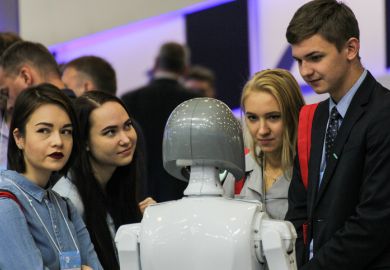The prestigious Science family of journals is reversing its ban on the use of ChatGPT and will allow authors to include content written by artificial intelligence tools in submitted papers.
In a U-turn on what it calls its “very restrictive stance” regarding the use of large language models in preparing text and figures, the publishing arm of the American Association for the Advancement of Science (AAAS) says authors will be permitted to use “AI-assisted technologies as components of their research study or as aids in the writing or presentation of the manuscript” as long as their use is noted in both their cover letters and in the acknowledgements sections of any submitted papers.
“Detailed information should be provided in the methods section,” it explains in updated guidelines published on 16 November, adding: “The full prompt used in the production of the work, as well as the AI tool and its version, should be disclosed.
“Authors are accountable for the accuracy of the work and for ensuring that there is no plagiarism,” explain the new guidelines, which state that “editors may decline to move forward with manuscripts if AI is used inappropriately”.
Authors must also “ensure that all sources are appropriately cited and should carefully review the work to guard against bias that may be introduced by AI”.
Continuing its existing policy on authorship, AI should not be listed as an author or co-author, nor should sources cited in Science journals be authored “in whole or in part” by AI tools, it says.
The publishing group says it does not allow the use of AI by reviewers because this “could breach the confidentiality of the manuscript”. This follows reports that some submitted papers at other journals have been rejected for their failure to cite authors whom it later emerged were created using generative AI technology.
“AI-generated images and other multimedia are not permitted in the Science journals without explicit permission from the editors,” continue the guidelines, with exceptions only granted in “certain situations – eg for images and/or videos in manuscripts specifically about AI and/or machine learning. Such exceptions will be evaluated on a case-by-case basis and should be disclosed at the time of submission.
“The Science journals recognise that this area is rapidly developing, and our position on AI-generated multimedia may change with the evolution of copyright law and industry standards on ethical use.”
In an accompanying commentary, Science’s editor-in-chief, Holden Thorp, and its executive editor, Valda Vinson, say the “policy for the Science family of journals has been that the use of these tools in research is acceptable as long as proper disclosure appears in the methods section.
“However, we initially took a very restrictive stance regarding the use of ChatGPT in preparing text and figures while monitoring thoughts and responses across the broad scientific community. As we said earlier this year, ‘we believe it is prudent to wait until we have more clarity on what uses the scientific community will see as permissible’,” they continue.
They add that the new advice reflects changes in editorial policies by several organisations, including the International Committee of Medical Journal Editors (ICMJE), the World Association of Medical Editors and the Council of Science Editors.




